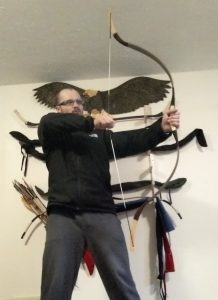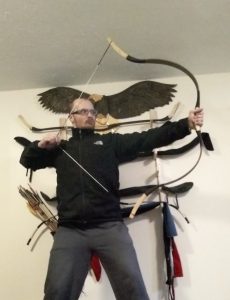How to Practice Archery at Home
How to Practice Archery at Home
Archery, like many other pursuits in life, requires a certain degree of practice for one to become proficient. It is a well-established fact that archers throughout history were trained from childhood, receiving plenty of practice before maturation. It was noted by the Romans that the Huns would make sure their children would begin riding horses and shooting bows as early as possible. They also noted that sometimes they would ride and shoot before they could walk. Well, that seems extreme! Whether or not it was true is another story. The point here is that it was well-known, even in those days, that proficiency comes with much practice. But where exactly should the practitioner train? Why not at home? Good question. We will answer it here in this very article which is all about how to practice archery at home.

Can You Train Archery at Home?
The answer is a resounding yes. You could train on the moon. Even Mars, but Venus is way too hot and the atmospheric pressure would crush you. OK, back to Earth for a moment. The answer is obviously yes. But what exactly should you do? Set up an indoor range? Should you do archery in your backyard if you have space? All important questions which we will address shortly. But first, we will lay the groundwork with some background and theory in practice in general.
The Importance of Practice
Does anything really worthwhile, rewarding, and enjoyable come about without hard work? Without practice? Without “being in the trenches” as the saying goes? Not really. Practice is important. As mentioned previously, archers throughout history got into a lot of practice. Whether it was a Hun or an English peasant emphasis was placed on practice and/or training.
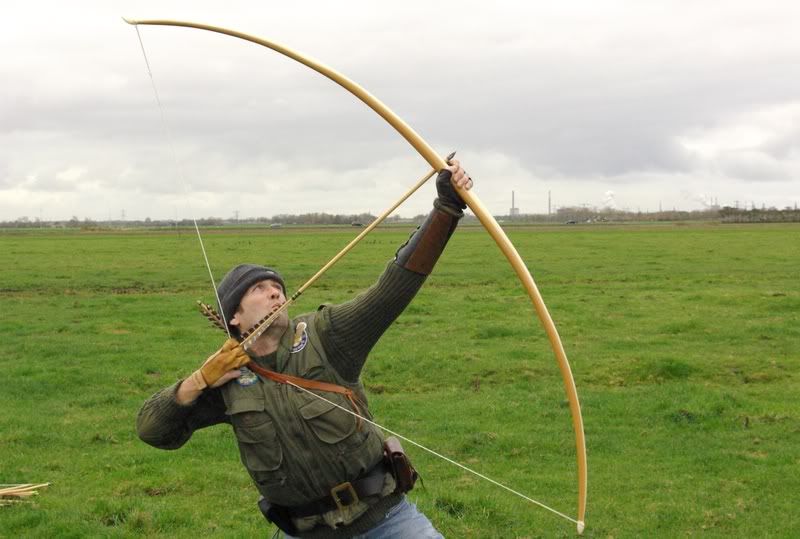
The reader may be familiar with the fact that medieval England had laws that required the practice of archery. This includes a declaration by Edward III of England in 1363:
“Whereas the people of our realm, rich and poor alike, were accustomed formerly in their games to practice archery – whence by God’s help, it is well known that high honor and profit came to our realm and no small advantage to ourselves in our warlike enterprises… that every man in the same country, if he be able-bodied, shall, upon holidays, make use, in his games, of bows and arrows… and so learn and practice archery.[24]“
How to Practice Archery at Home – Quantity Vs Quality
One more note on practice in general before we get into specifics. You may have heard of the so-called “10,000” hour rule. This basically states that across most fields roughly 10,000 hours of practice or training is required to become an expert or master. it was popularized by Malcolm Gladwell in his bestseller Outliers: The Story of Success
While it is true that many fields require years of consistent practice, this is but one side of the equation. The number of hours spent training could be made irrelevant because it matters what you do, and how you train. Obviously spending 10,000 hours practicing juggling will not make you a better archer.
How you train can drastically reduce the time required to become proficient. You could spend a few hours on your own, trying to figure things out. But what if you had an expert that was teaching you in person? Someone who knows the ins and the outs through their own trials and tribulations. This could drastically reduce the amount of time spent mastering your trade or skill of choice. This is an important consideration. Quantity versus quality. Time spent training should be of high quality as well as consistent, with much patience over time.
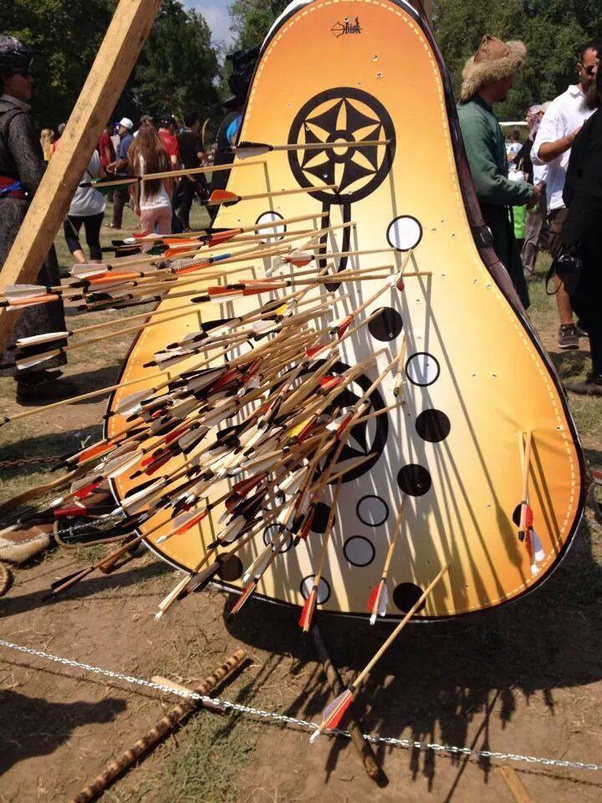
How to Practice Archery at Home – The Issue of Safety
Safety is obviously a concern when practicing archery, especially while at home where there could be other people in the home. Being wise and decent human beings, we do not want any mishaps, accidents, or injuries while practicing. As discussed in the safety section of our article on backyard archery, we will seek the elimination of the possibility of stray arrows causing damage to lifeforms and/or property.
As any wise recreational firearms user knows, the shooter takes full responsibility for each and every shot they make. This includes being responsible for the target as well as whatever lies beyond it. Be safety conscious and take full responsibility for your actions when it comes to loosing arrows.
Specific Physical Training (SPT)
A great way to practice archery at home is with Specific Physical Training or SPT. The terms Specific Physical Preparedness (abbreviated SPP), and Sports-specific Physical Preparedness are also used interchangeably.
SPT refers to physical training designed specifically for athletic performance enhancement. SPT is an excellent way to develop strength and endurance. The best part is that SPT can be performed almost anywhere, even at home. Specific Physical Training can be done with a bow, stretch bands, or other training aid.
USA Archery’s National Head Coaches, Songi Woo, and KiSik Lee are proponents of using SPTs. This type of training can be especially beneficial during specific times of the year to develop strength and endurance.
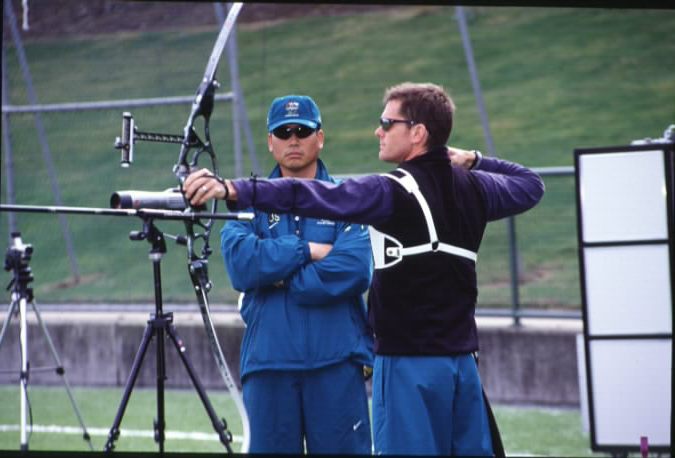
Coach Woo explains, “SPT is a really good way for archers who are not able to train full time, or who are traveling frequently, to develop necessary strength and control of the shot process.”
For more see our article on archery drills here.
Here are a few examples of SPT exercises you can perform. They are super simple and as previously mentioned they can be performed nearly anywhere.
Draw & Hold SPT
This one is great for developing muscular endurance and strength. You simply take your strung bow (or resistance bands) without an arrow nocked and follow your normal shot process until you reach full draw. You then hold at full draw for 10 to 30 seconds. The archer will then (slowly) let down from full draw (please avoid dry-firing) and rest. The resting phase is typically 30-60 seconds. Then the process starts again with the archer drawing and holding. Typically 10 cycles or sets are performed, however, you can start with 5 if you so desire, or with a lighter draw-weight bow. Or you could use some of your God-given creativity and come up with your own variation.
Repetitive Draw
The repetitive draw builds strength as well as endurance in the archer. You may use a bow or resistance bands or both. A dumbbell row or other form of a weight-lifting row will also accomplish the same results.
- Draw your bow to full draw and hold for 3-5 seconds (no arrow required)
- Slowly and deliberately let the bow down to the starting position
- Repeat for 5-12 repetitions within 3-5 sets
- You should be aiming at something, while also focusing on maintaining the correct posture
How Can I Practice Archery Without a Bow?
So, you can’t make it to the range, or you just want to stay home and practice archery. Also, you don’t have a bow. Well, you’re not much of an archer yet but that’s OK and we understand. There are many ways in which you can practice archery without a range, and even without a bow!
One way you can practice archery without a bow is with resistance bands or stretch bands. Get yourself some resistance tubing or a decent exercise band. You could also consider acquiring a resistance band set, that has several bands at different resistance levels.
Once you have your resistance band(s) you can perform Specific Physical Training (SPT). You may then proceed to perform the “draw and hold SPT” and the “repetitive draw SPT” as outlined above. This is a great way to keep in shape by activating those archery muscles. The main advantages of doing SPT with resistance bands are two-fold. These exercises can be performed anywhere, and you don’t even need a bow and arrow!
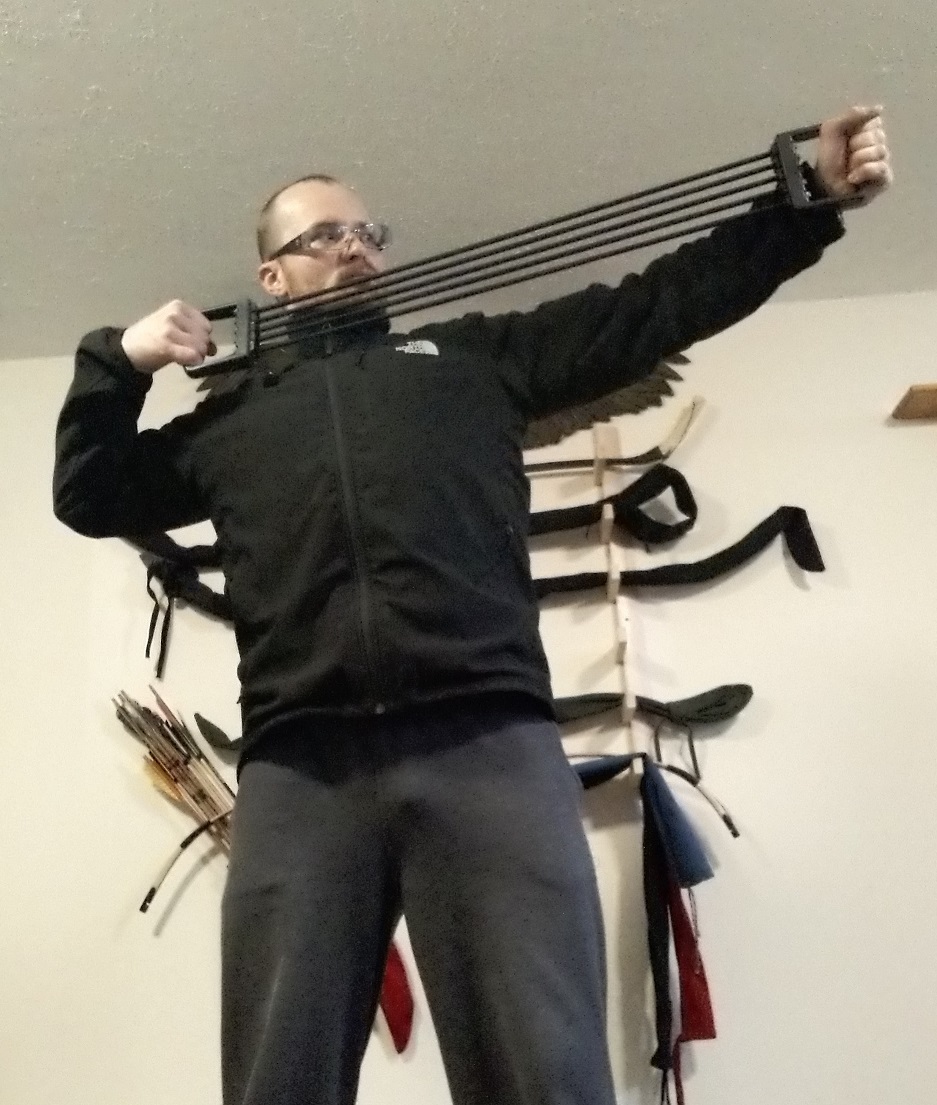
How to Practice Archery at Home – The Human Imagination
Have a good imagination? Good! Put it to use in your archery practice. A good exercise that you can perform without a bow may be conducted as follows:
- Acquire a small target. Or draw one yourself. Or print one out. Usually the smaller the better but you don’t want it to be microscopic
- Grab your resistance tubing
- Attach the target to a wall or vertical surface
- Take your archery stance a couple of meters away from the target
- Now use your imagination!
- Go through your shot process, drawing, aiming, release
- Imagine the arrow flying through the air and hitting the target
- You may imagine shooting in different places, at various tournaments, and in various weather conditions
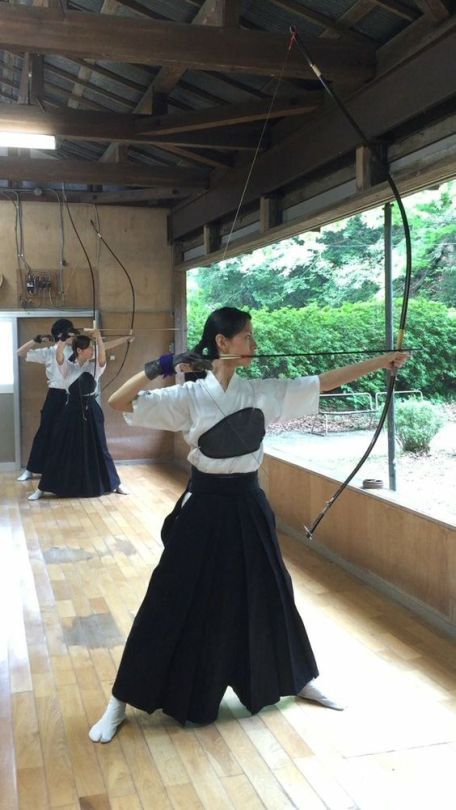
How to Set Up an Indoor Archery Range at Home
Considered risky behavior by most, it is entirely possible to set up an indoor archery range at home. We do not want arrows hitting anything (or anyone) other than the target or backstop.
- Location. Picking the right location in a house definitely helps mitigate some of the potential damage or harm that could be inflicted. A garage or unfinished basement, or large attic is ideal.
- Backstop. A suitably large backstop of an appropriate material is required to help eliminate any damage or injury that could be caused by arrows that have missed the mark.
- Lifeform traffic. Ideally, you want to set up your indoor range in an area where there is little to no traffic. If there is a chance of traffic, a sign or visual warning of some sort would be beneficial
How to Practice Archery at Home – The Backstop
Some archers use straw bales as backstops as they catch arrows well without damaging them. This of course would be undesirable by most indoors. For indoor archery ranges, some use a large bag-style target for the back-stop, then place a smaller target in front for the actual target to be shot at.
For a more robust backstop system, backstop netting is the way to go. Most backstop netting covers a larger surface (approximately 8 feet by 5 feet is common). This netting may be constructed from layered and pressed nylon or other layered ballistic material. Check out the one from amazon below by clicking the image!
These backstops can range from 80 dollars or so to several hundred, depending on the type of material and size. Don’t want to fork out all that cash? Well, there are ways to build one yourself. We may devote an entire article to such an endeavor in the future but for now, check out the video below for some inspiration.
After having secured the appropriate space, accounted for traffic, and installed your backstop and target, you should be good to go. You do not need a lot of space. Most indoor home ranges max out at about 25 yards, but 5 to 10 yards should suffice.
Target Size
Targets come in a variety of sizes. We are referring to the standard round targets with concentric circles and different colors. One thing to keep in mind is if you have a short distance to work with but wish to simulate a larger distance, use a smaller diameter target.
For example, the compound bow event held in World Archery Championships and Archery World Cup but not in the Olympics has a distance of 50 meters. The target is 80 cm in diameter with the innermost 10-point ring 8 cm in diameter. If however, you are training for such distances and/or events and only have 10 meters to work with, you can simulate a 50-meter distance by having a target face that is one-fifth the size. In the case of the 80 cm target, this would be 80 / 5 = 16 inches. If you can’t find one on the market in this size range here’s what you do. Grab a piece of blank paper, a ruler, and a sharpie, and make one yourself.
You can read more about archery targets in a previous article by clicking here.
Check out this informative video about target size by NuSenei below:
Blank Bale
Another fantastic archery practice you can practice from home is what is known as blank bale shooting. The target used in blank bale is, well there is no target and that’s the point. A blank (meaning no specific target is used) bale shooting practice revolves around perfecting one’s form and technique.
Without the pressure of trying to hit a target accurately and consistently, the archer instead focuses entirely on shot execution, ie, proper form and technique. This method of practice is excellent for beginners and is also used by professional archers as well.
Backyard Archery
Perhaps indoors is not your thing. It is even entirely possible that your wife will strongly object to setting up an indoor archery range. Yes, as ridiculous as this sounds it has been well-documented to have happened. Perhaps shooting outdoors would be more to your liking. In this case, we recommend setting up a backyard archery range.
We will not go into too much detail on backyard archery as all the same considerations apply to indoor shooting. There is even more of a safety concern with backyard archery. If one of your arrows goes astray indoors, your house’s walls will be the last backstop and will contain the arrow. This of course will not be the case with outdoor shooting. The chances of stray arrows going off into the distance in an unintended direction are obviously more likely in outdoor shooting.
Please refer to our in-depth article on backyard archery here.

How to Practice Archery at Home – The Mental Game
Another important aspect of archery, like with all sports in general is the mental game. How well can you focus on the task at hand? Can you mentally eliminate all distractions? How pissed off do you get when you miss the target and are generally having a poor shooting day? How quickly can you recover mentally from setbacks, defeat, and all the other wonderfully painful things life can throw our way? These are all questions that all high-level athletes must address. It is no different in archery.
Here are some practices the archer may wish to consider to improve their focus, attitude or other aspects of the mental game:
- Mediation – known to improve focus and mental clarity if done consistently
- Deep breathing – very much tied into a good meditation practice
- Yoga – combining the mechanics of the body with meditation
- Hypnosis – used by top athletes to help get their negative thoughts and subconscious under control
If you would like to read more about archery’s mental game check out our article on archery hypnosis here.
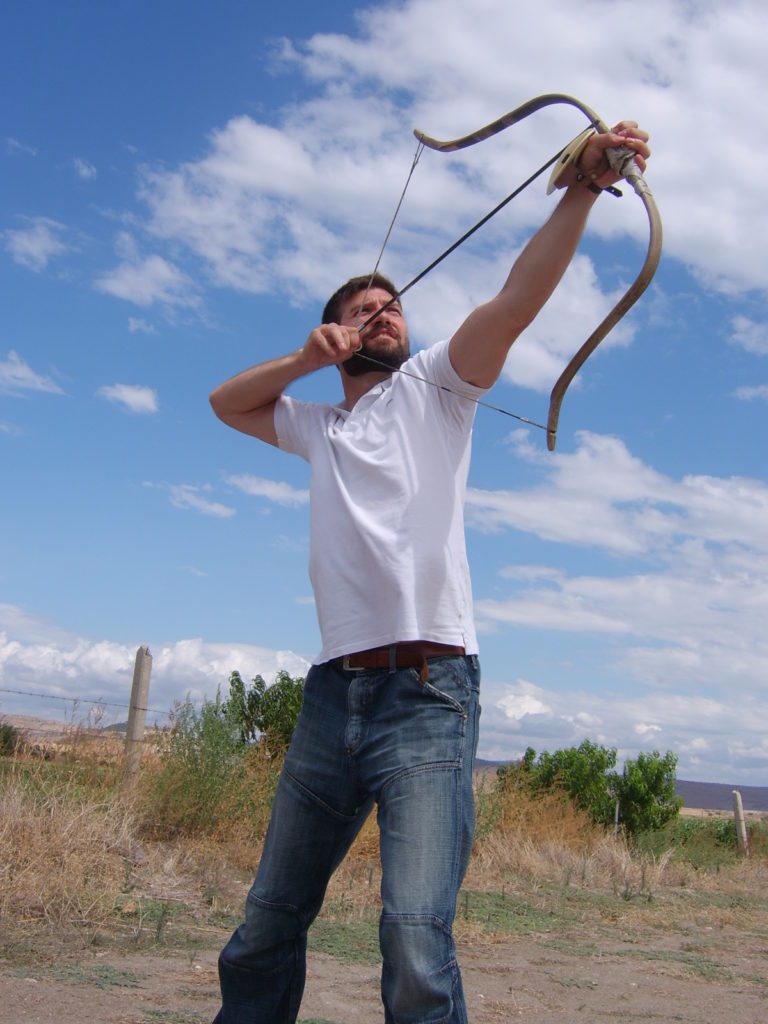
Reading/Research
One final note on the mental game of archery, which of course can be practiced at home (or almost anywhere). This note is in regard to reading and/or doing research about archery. As you may or may not be aware, archeryhistorian.com conducts plenty of research on all topics related to archery. Of course, our favorite area of research revolves around history. There is always something new to learn and immerse yourself in. Anyone who thinks or believes that they know enough and are above further exploration and learning are what we like to call wrong.
There is an ever-expanding plethora of articles being published here on archeryhistorian.com which you can read and enjoy. We of course do not have all the information. You can find a wide range of books on archery available on the web. We’ve compiled a list of Archery Books here which may interest you. Indeed some of the books listed on the archery books page were used as sources form much of the research we do here. Please give it a minute to load as there are several books we’ve linked to amazon so you can click on them for more information or to purchase.
How to Practice Archery at Home – Final Thoughts
As the old saying goes “where there is a will, there is a way”, and that applies to many things in life. It is also true with practicing archery. If you can’t make it to the range or don’t want to, you can still practice archery! If done safely and conscientiously you can practice from the comfort of your own home. Whether it’s the basement, garage, or backyard you can make it happen.
Thank you and take care.
